 |
 |
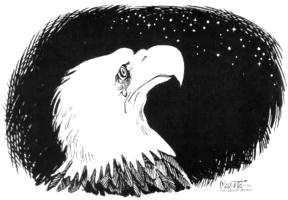 |
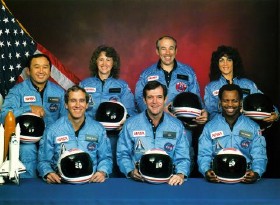 |
 |
Join the Challenger Disaster discussion group at
Yahoogroups.com.
To subscribe, send e-mail to Challenger_explosion-subscribe@yahoogroups.com,
or visit http://groups.yahoo.com/group/Challenger_explosion
to join.
"The Flight
of Icarus"
by Sally Benson
(Childcraft,
1968 edition, vol.2, pp. 276-279)
| Once
long ago in Greece there lived a famous mechanic named Daedalus.
While he was visiting Crete, King Minos, the ruler of the island, became
angry with him, and ordered him shut up in a high tower that faced the
lonely sea. In time, with the help of his young son, Icarus, Daedalus
managed to escape from the tower, only to find himself a prisoner on the
island. Several times he tried by bribery to stow away on one of
the vessels sailing from Crete, but King Minos kept strict watch over them
and no ships were allowed to sail without being carefully searched.
Daedalus
was an ingenious artist and was not discouraged by his failures.
"Minos may control the land and He called his son Icarus to him and told the boy to gather up all the feathers he could find on the rocky shore. As thousands of gulls soared over the island, Icarus soon collected a huge pile of feathers. Daedalus then melted some wax and made a skeleton in the shape of a bird's wing. The smallest feathers he pressed into the soft wax, and the large ones he tied on with thread. Icarus played about on the beach happily while his father worked, chasing the feathers that blew away in the strong wind that swept the island. And sometimes he took bits of wax and worked it into strange shapes with his fingers. It was fun making the wings. The sun shone on the bright feathers; the breezes ruffled them. When they were finished, Daedalus fastened them to his shoulders and found himself lifted upwards, where he hung poised in the air. Filled with excitement, he made another pair for his son. They were smaller than his own, but strong and beautiful.
Daedalus watched him proudly but with misgivings. He called Icarus to his side, and putting his arm around the boy's shoulders, said, "Icarus, my son, we are about to make our flight. No human being has ever traveled through the air before, and I want you to listen carefully to my instructions. Keep at a moderate height, for if you fly too low the fog and spray will clog your wings, and if you fly too high the heat will melt the wax that holds them together. Keep near me and you will be safe."
Father and son flew over Samos and Delos which lay to their left, and Lebinthus, which lay on their right. Icarus, beating his wings in joy, felt the thrill of the cool wind on his face and the clear air above and below him. He flew higher and higher up into the blue sky until he reached the clouds. His father saw him and called out in alarm. He tried to follow him, but he was heavier and his wings would not carry him.
Then, with a flutter of wings, he once more took to the air, but the joy of his flight was gone and his victory over the air was bitter to him. He arrived safely in Sicily, where he built a temple to Apollo and hung up his wings as an offering to the god of the sun.
|
|
A Personal Reflection 
It's only a myth... yet who among us hasn't dreamed of soaring free like a bird through the sky? Who hasn't wished, if only for a moment, to shatter the very shackles of gravity itself? In a flight of fancy we strap on our own wings and join Icarus on his virgin flight as we imagine what must have raced through his mind... what sights and sounds must have greeted his eyes and ears... what feelings must have washed over him in his ecstasy... The exhilaration
of soaring through the clouds... the interplay of light and shadow on the
land and sea below... the rush of the wind in his ears... the satisfying
beat of his wings upon the air... the cool mist of the clouds in his hair
and on his skin... the heat of the sun upon his back as he rose higher,
ever higher...
...the curious sight of ... feathers ... drifting free beneath him... the odd sensation of falling... the bewildered beating of wings that no longer held him aloft... the uncontrollable tumbling... the shock of realization that something had gone horribly wrong... the desperate cries for help to his father... the terrifying plunge into the unforgiving depths of the ocean below...
...It's only a myth... ...yet we imagine
what must have raced through his mind... what anguished prayers must have
escaped his lips before his fragile body slammed into the surface of the
sea... and then...
And then mythology and reality collide as we realize with a start that we've heard this story before... read it before... seen it before... ...unfolding relentlessly before our confused, blinking eyes... exploding into our consciousness from out of the clear blue sky... searing itself into our stunned, unbelieving minds even as we desperately try to wish it away... to turn back the clock... to undo what cannot be undone. The best and brightest of who we are, embracing and transcending race, creed, nationality, and gender... the embodiment of all that we would hope to offer of ourselves to our world, to our children, to our posterity... all our hopes, our dreams, our aspirations... our illusions... crumble to ruin and wreckage before us, and the fall of Icarus is transformed from a nearly-forgotten relic of Western civilization's antiquity into the icon of the defining event of an entire generation's cultural memory; for Icarus -- young, daring, joyful Icarus -- was merely the first ... challenger ... of the heavens. |
"T-minus 10...9...8...7...6...we have
main engine start...4...3...2...1...
and liftoff, liftoff of the twenty-fifth
space shuttle mission
and it has cleared the tower."

| "Houston, Challenger roll program." | |
 |
 |
| "Roger roll, Challenger." |
|
Soaring on the wings of dawn Here I'll live and die with my wings in the sky And I won't come down no more |
 |
 |
| "Good
roll program confirmed.
Challenger now heading downrange...
Engines beginning throttling down now, at ninety-four percent; normal throttle for most of the flight, a hundred-and-four percent... We'll throttle down to sixty-five percent shortly... |
|
Crimson skies of ice and fire Borne on Wings of Steel, I have so much to feel And I won't come down no more |
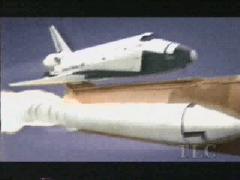 |
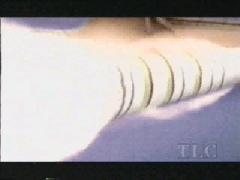 |
 |
| "...Engines
at sixty-five percent. Three engines running normally.
Three good fuel cells. Three good APUs... Velocity twenty-two-hundred-fifty-seven feet per second. Altitude 4.3 nautical miles. Downrange distance three nautical miles... |
 |
 |
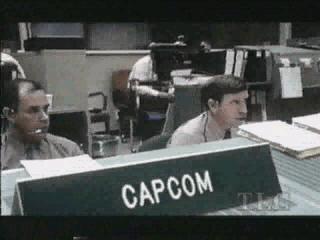 |
| "Engines
throttling up; three engines
now at a hundred-and-four percent." |
"Challenger, go at throttle up." |
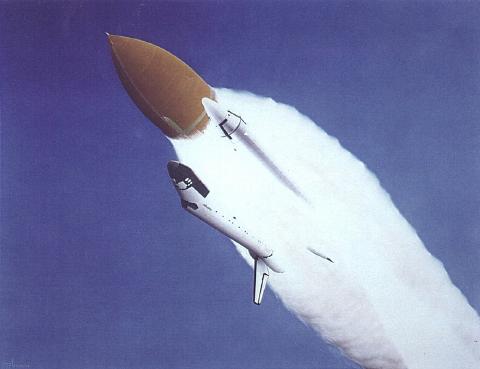 |
| "Roger, go at throttle up..." |
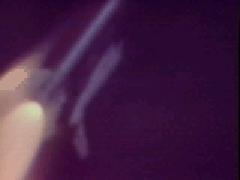 |
 |
 |
 |
 |
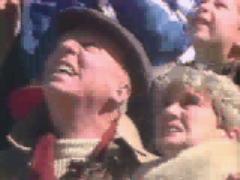 |
 |
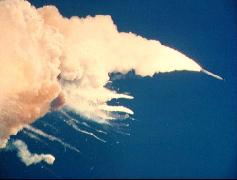 |
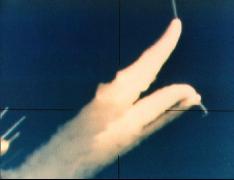 |
| "One
minute fifteen seconds. Velocity twenty-nine-hundred feet per second.
Altitude nine nautical miles. Downrange distance seven nautical miles... |
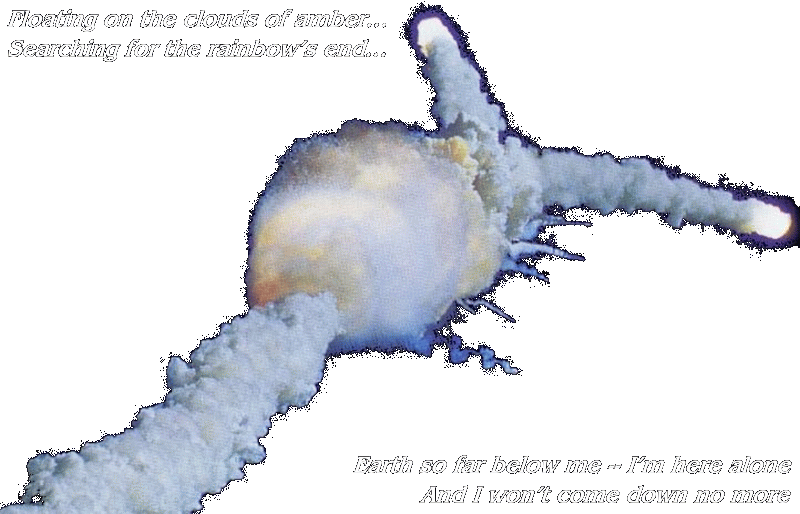 |
 |
Sail on, sail on... |
| I
will rise each day
to meet the dawn |
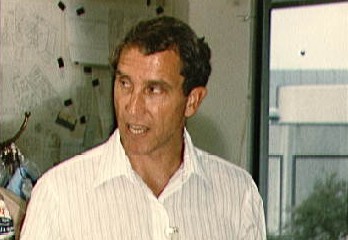 |
 |
So high, so high... |
| I've
climbed
the mountains of the sky |
 |
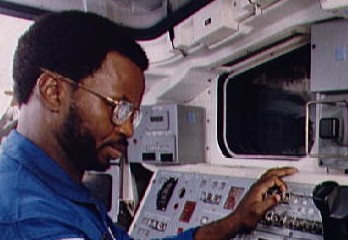 |
Without
my wings,
you know I'd surely die |
| I
found my freedom
flying high |
 |
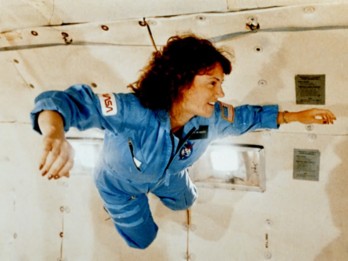 |
I've
climbed
the mountains of the sky... |

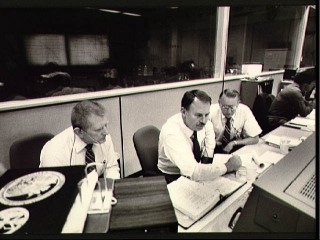 |
"...Flight controllers here are looking very carefully at the situation..." |
| "...Obviously a major malfunction..." |  |
 |
"...We have no downlink..." |
|
from the Flight Dynamics Officer that the vehicle has exploded..." |
 |
 |
"Flight Director confirms that..." |

"...We are looking at checking with
the recovery forces
to see what can be done at this point..."
| Seven Ordinary People... |
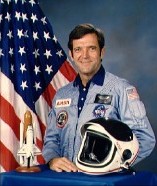
Francis Scobee Commander |

Michael Smith Pilot |

Judith Resnik Mission Specialist |

Ellison Onizuka Mission Specialist |

Ronald McNair Mission Specialist |
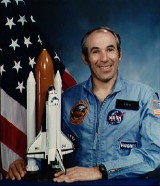
Gregory Jarvis Payload Specialist |

Christa McAuliffe Teacher in Space |
| Seven ordinary people, possessed of extraordinary skill, determination and courage, striving together to forge another link to humanity's future... and paying the ultimate price to attain a goal larger than themselves. |
| As long as we hold fast to the hope of a better world for ourselves and for those who come after us, then triumph may yet be wrested from the wreckage of disaster. | 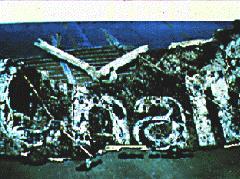 |
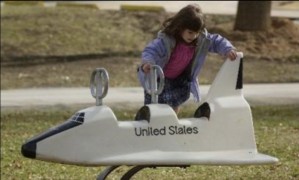 |
As long as we hold forth these seven as examples to be emulated, then our children will learn that heroes are born within each of us. |
| As long as we strive to the same ideals that they exemplified, then these honored dead will live on in our hearts and minds. |  |
As long as we remember...
The Mission Continues...

Phoenix by Mike Vincent. Used with permission.
Downlinks...
Credits:
Images of Daedalus
and Icarus were gleaned from various mythology sites on the Internet.
Challenger
and related images are from the
Johnson
Space Center web site
and various
Challenger
memorial
sites across the Internet.
"Child at Play"
photo by Orlin Wagner.
"Weeping Eagle"
cartoon by Doug Marlette of the
Charlotte Observer, January 28th,
1986;
"Shuttle Constellation"
cartoon by Jack Ohman of The Oregonian, January 28th, 1986.
"Icarus - Borne on Wings of Steel"
by Kansas
Lyrics and music by Kerry Livgren
Drums, Moog drum and assorted percussion
by Phil Ehart
Bass Guitar by Dave Hope
Lead and rhythm guitar, acoustic
guitar, piano, clavinet, Moog and ARP synthesizers by Kerry Livgren
Violin and vocals by Robby Steinhardt
Organ, piano, clavinet, Moog synthesizer,
congas and vocals by Steve Walsh
Lead and rhythm guitar by Rich Williams
"Icarus - Borne on Wings of Steel"
first appeared on Kansas' 1975 album
Masque
on Kirshner Records.
Click the above image for more information about this album.
Site concept and design by
Michael E.
Brooks, M.Div., Th.M.
dataman@datamanos2.com
Former NASA
flight dynamics officer Roger Balettie has done me the honor of posting
the text
of "Icarus
Rising" with his own graphic work at
Icarus
Rising -- A Tribute to the Challenger Crew of STS-51L.
Special thanks
go to Simon Atkinson for his generous permission to use his amazingly realistic
painting "Challenger,
go at throttle up" as part of this site. More examples of Simon's
expertise
may be found
at Simon Atkinson Creative
Arts.
Heartfelt thanks
also go to Albert Khalis Pride for his labor of love in tracking down the
lyrics
to the Commodores'
1980 song "Heroes."
Extra special
thanks go to Diana Whay and Roger Balettie for inspiring and encouraging
me
in late 1998
to begin the transformation of "Icarus Rising" from a simple e-mail memorial
into this Web
site.
And finally, unfathomable thanks go
to the brave men and women
of the Space Shuttle Challenger
STS-51L.
YOUR MISSION CONTINUES.
Please visit also
and
Return to the
NASA Ribbon image by Clay Bennett
of The Christian Science Monitor.
(Disclaimer: This site has no official connection with or endorsement by NASA.)